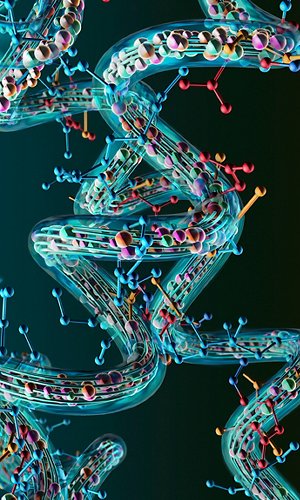Let us imagine a world where life progresses so slowly that a single day could last millions of years. This world is not on the surface of the Earth, but deep underground, inside ancient rocks that formed two billion years ago. In a fascinating new study conducted in South Africa, a team of scientists discovered microbial life forms in an extreme environment that has been isolated for millions of years. Beneath the Earth's surface, at depths greater than eight meters, lies one of the most fascinating and mysterious ecosystems: the 'deep subsurface'. Here, in the absence of light and with extremely limited energy resources, microbes lead a silent and slow existence. This study focused on the rocks of the Bushveld Igneous Complex, one of the largest expanses of solidified magma in the world (spanning an area comparable to Iceland) that formed over two billion years ago during the Proterozoic era. Using advanced drilling and microscopy techniques, researchers took samples of these ancient rocks and discovered colonies of microbes living inside them, in tiny fractures filled with clay. The clay sealed the fissures, effectively isolating bacteria from the rest of the world for an extraordinary length of time. But how did those bacterial cells survive in such an extreme and isolated environment? What did they feed on?
In the deep underground, energy sources that could sustain microorganisms are incredibly scarce. Yet, microbes are masters of survival. The clays filling fractures in the rocks not only protected bacteria from the outside environment, but also provided them with iron-containing minerals. Iron, when reacting with water, produces hydrogen, an energy source essential for the life of many microorganisms living in such extreme and isolated environments. Thanks to this process, bacteria have managed to survive for billions of years. Furthermore, from a geological point of view, these underground environments are remarkably stable, without major movements or transformations that could disturb a millennial balance.
To detect microbes deep in the rocks, researchers had to develop innovative investigative methods. They used fluorescent microbeads to detect whether the fractures were intact or contaminated by material accidentally introduced during drilling. This precaution was crucial to ensure that the microbes detected were actually present in the rocks and not introduced during excavation operations. Additionally, they employed a sophisticated technique called optical-photothermal infrared spectroscopy (O-PTIR), which allows them to capture images of individual cells and map the minerals present in the rocks. This made it possible to identify not only microbes, but also the minerals that provide them with the energy they need to survive. This research marks a significant advancement in understanding life deep within the Earth. Discovering microorganisms in such an ancient and hostile environment offers us new insights into how life can endure extreme conditions, not just on Earth but potentially on other planets as well. For instance, Mars might harbor similar ancient life forms beneath its red surface. Furthermore, the discovery of bacteria that have lived in rock fractures for billions of years could provide valuable insights into the evolution of life. These organisms have remained virtually unchanged over time, living in a state of 'evolutionary freeze' in a stable environment, nourished by mineral energy sources. Their existence tells the story of what life on Earth was like two billion years ago. This discovery opens the door to further research in the field of subsurface microbiology and the evolution of life in extreme environments. Future studies will focus on better understanding the biology of these microbes, studying their DNA and metabolic processes, and investigating how they adapted to thrive in such extreme conditions over such extended periods of time. One thing is certain: life is incredibly resilient. Even in the most remote and inhospitable places on our planet, it finds a way to endure, slowly but surely.




